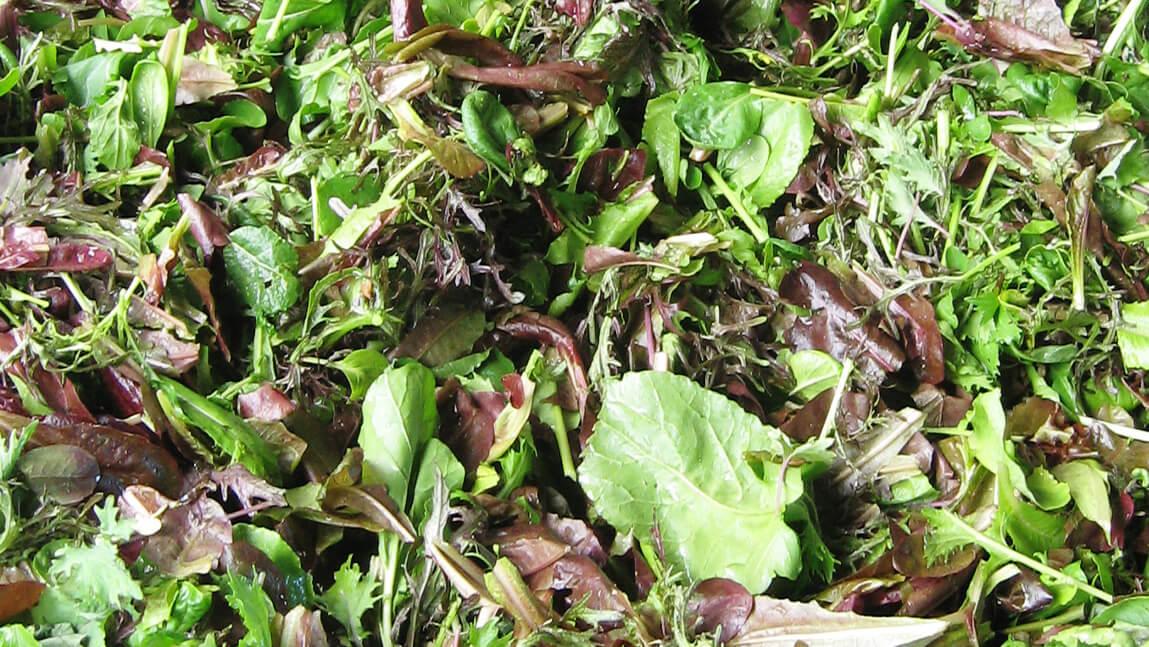Converting washing machines for use to dry greens is a cost-effective option for many small and medium farms. Research by UVM Extension agricultural engineers has resulted in a flow of information for produce growers on best practices for selecting a washing machine for conversion, SOPs for conducting the conversion, and guidance for maintenance, cleaning, and sanitizing this equipment.
Relevance
An important factor in growing and selling high-quality greens is being able to efficiently wash, cool, and dry the product. The drying step is commonly done using centrifugal force in a spinner, which spins the water off the greens through a filter basket or other porous container. Small- and medium-scale farms often find themselves stuck in the middle, where inexpensive, small-scale spinners cause a bottleneck, but it is hard to justify a more expensive industrial, stainless, restaurant-style machine to dry greens. The solution for many of these growers is to use a washing machine. Use of this equipment is not prohibited by the Food Safety Modernization Act Produce Safety Rule (PSR), which sets mandatory, science-based, minimum standards for the safe growing, harvesting, packing, and holding of fruits and vegetables grown for human consumption. However, its use as a greens spinner can present food safety concerns making proper design and management essential.
Response
To improve the efficiency of washing machines used as greens spinners and prevent them from causing more problems than they solve, Andy Chamberlin and Chris Callahan from the UVM Extension Ag Engineering Program have applied hygienic design principles to reduce produce safety risks. With proper management and attention to the details of hygienic design, a washing machine greens spinner, like any other equipment, can meet the standards of the PSR [112.123(a) & (c)]. Through research, the agricultural engineers developed best practices for selecting a washing machine for conversion, standard operating procedures (SOPs) for conducting the conversion, and guidance for maintenance, cleaning, and sanitizing such conversions. These resources are available to produce growers through UVM Extension blog posts, downloadable PDFs, and YouTube videos. In addition, workshops on hands-on spinner conversion have been held so growers can bring their washing machines for help with conversion.
Results
To date, 34 growers have expressed interest in improving their homemade greens spinner. Fifteen of those have already done at least one conversion. Growers have remarked on the time saved in cleaning, the ease of wash-pack cleanup using a spinner on wheels, and the cycle time improvement that comes from having a machine with a brake installed. They also have expressed thanks for the clear instructions (SOPs) provided for specific models of washing machines. Educational materials about greens spinners for farm use not only benefit growers and their customers. Produce safety enforcement personnel from around the country have used the materials to better understand the nuance of this practice and how it can be done in such a way that complies with the federal regulations. This has eased some concerns by growers and encouraged conversations about needed improvements on specific farms in Vermont.
Public Value Statement
Consumers expect the food they purchase to be grown and handled so that it is safe to consume. Yet every year, the Centers for Disease Control and Prevention estimates that around one in six Americans contracts a foodborne illness with more than four million people getting food poisoning from produce. Growers have a responsibility to follow good food safety practices at each stage of production from planting, harvesting, and processing to marketing to minimize the risk of foodborne illness from greens and other produce. Innovative research such as this is a win-win situation for both the grower and the customer as it provides an alternative to expensive spinners for farms while following federal guidelines for food safety to protect the consumer.Funding was made possible, in part, by the Food and Drug Administration, Food Safety Outreach Program, and by USDA Northeast Sustainable Agriculture Research and Education.
